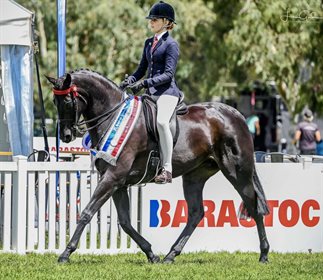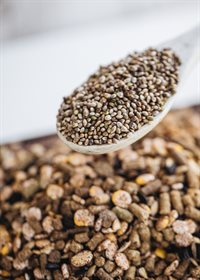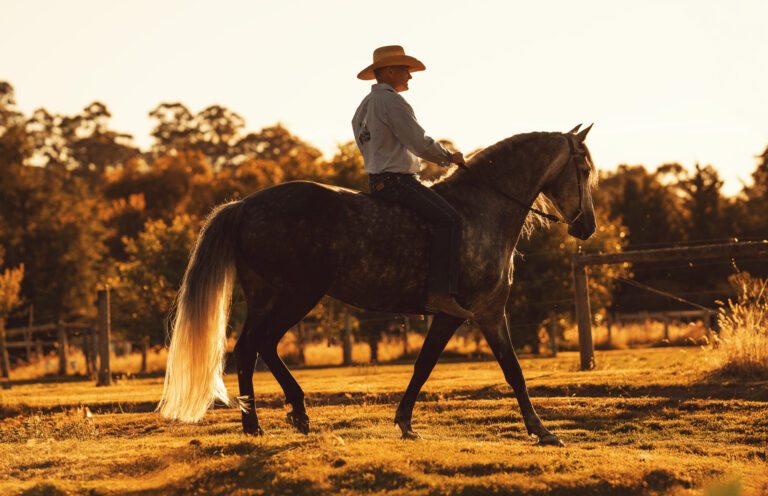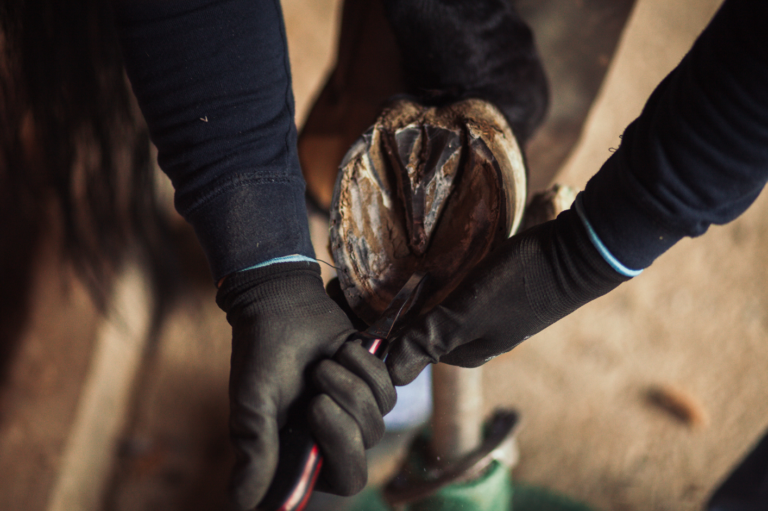Barastoc Nutritional Advantages for Performance Horses
The art of feeding performance horses comes from matching the best dietary energy sources to fuel your horse. The energy demand in performance and sports horses is very high, so getting extra calories is a priority. This extra digestible energy must be provided to maximise performance while helping maintain digestive health and function. When your horse is competing, its nutritional needs are higher, and during recovery, it needs particular nutrients and different sources of energy to keep up its outstanding performance.

Christine Frost’s thoroughbred hack ‘Ink’ ridden by Georgiana Walsh trotting out in style.
© LMG Photography
Some of the unique attributes and merits of Barastoc Competitors:
Prebiotic and Postbiotic (Diamond V)
Diamond V XPC is a yeast culture that promotes excellent digestive health and rapidly improves your horse’s immune system. Diamond V XPC also assists in recovery from hard work and reduces stress and inflammation by suppressing lactic acids and free radicals. Being an all-natural, fermentation-based prebiotic produced using a proprietary anaerobic fermentation technology of Saccharomyces cerevisiae-producing metabolites. By promoting robust, healthy digestion, these nutritional metabolites include organic acids, phenols, peptides, nucleotides, phytosterols, mannans and beta-glucans that support the growth of intestinal bacteria as they are used as a food source.
Metabolites support better digestion efficiency of feed nutrients by balancing gut microbiota and the immune system while optimising gut morphology. Prebiotic activity helps nurture hindgut microbial populations, while antioxidant activity improves immune function.
- Improved immune function through improved gut morphology
- Feed digestibility and efficiency
- Performance and recovery
- Health and wellness
- Immune function by reducing systemic inflammation and antioxidant status
- Digestive health by promoting a healthy balance of microbiome in the lower gastrointestinal tract
Horses are designed to be hindgut fermenters and eat diets high in fibre; this supports a hindgut microbiome including billions of bacteria, fungi and protozoa, which aid in the fermentation of cellulose and other fibrous feed elements. Maintaining a healthy hindgut microbiome is essential for healthy digestion by promoting an optimal balance of bacteria in the hindgut, reducing systemic inflammation function, improved immune function and gut morphology.
Natural Equine Antacid (Equine Gastrolize)
Barastoc Competitor now has the added benefit of containing a natural equine antacid, ‘Equine Gastrolize’. Gastrolize is a slow-release buffering agent that helps prevent gastric ulcers and supports the increased uptake of nutrients and minerals vital for peak performance. With increased levels of bioavailable sources of calcium, magnesium and trace minerals being derived from natural marine sources. Because of its highly porous honeycomb structure with a high surface area to volume ratio, it results in a highly digestible source of calcium and magnesium. Highly bioactive and with superior absorption compared to other traditional sources of calcium, increased levels of highly absorbable calcium increases bone strength. Gastrolize has a solid and persistent buffering capacity that may assist with maintaining a higher pH over a prolonged period.
Amino Acids
Amino acids are the primary building blocks of protein tissue and assist in top-line development and muscular integrity. The metabolic pathways (energy and protein synthesis) are the key elements: Exercise increases amino acid metabolism; for example, alanine can be released from muscle and used for gluconeogenesis in the liver. BCAA and β-Alanine play critical roles in lactate catabolism to pyruvate (recovery procedure) and extra nitrogen catabolism by-products load from the liver and muscular tissue.
This occurs from nitrogen being transported from muscle following a transamination reaction in which the amino group is removed from one amino acid and attached to pyruvate, forming alanine. The alanine is transported in the blood to the liver, where the nitrogen can be used to form urea, and the pyruvate is used for gluconeogenesis. Horses may lose 1 to 1.5 g N/kg of sweat; therefore, a horse sweating heavily during intense exercise may lose 5-7 g of nitrogen. Alanine and leucine concentrations increased only after exercise compared to rest. Barastoc Competitor has been formulated with increased essential amino acids such as lysine, methionine and threonine.
Source: Barastoc Feeds

READ THE LATEST NEWS ARTICLES HERE








